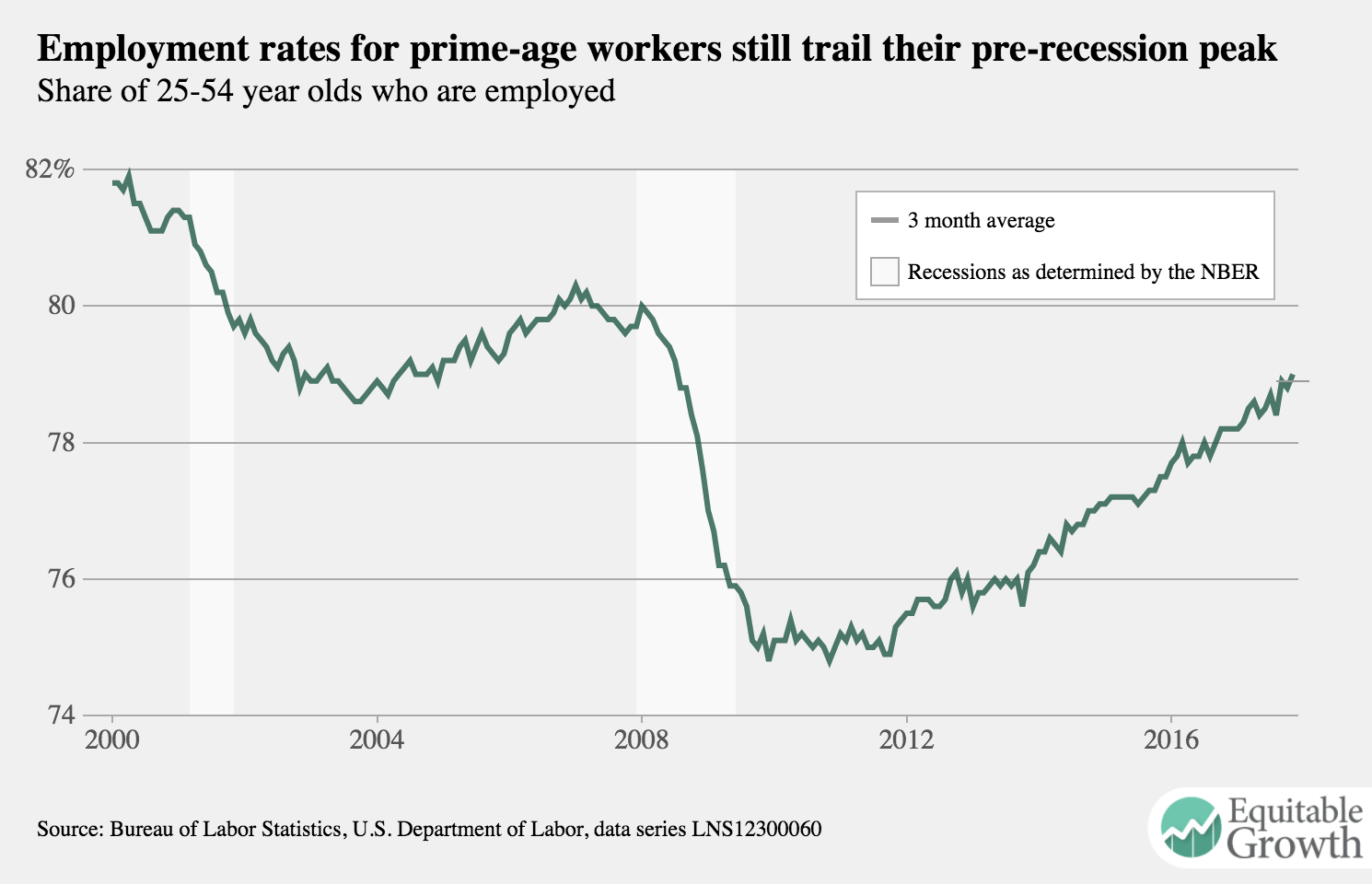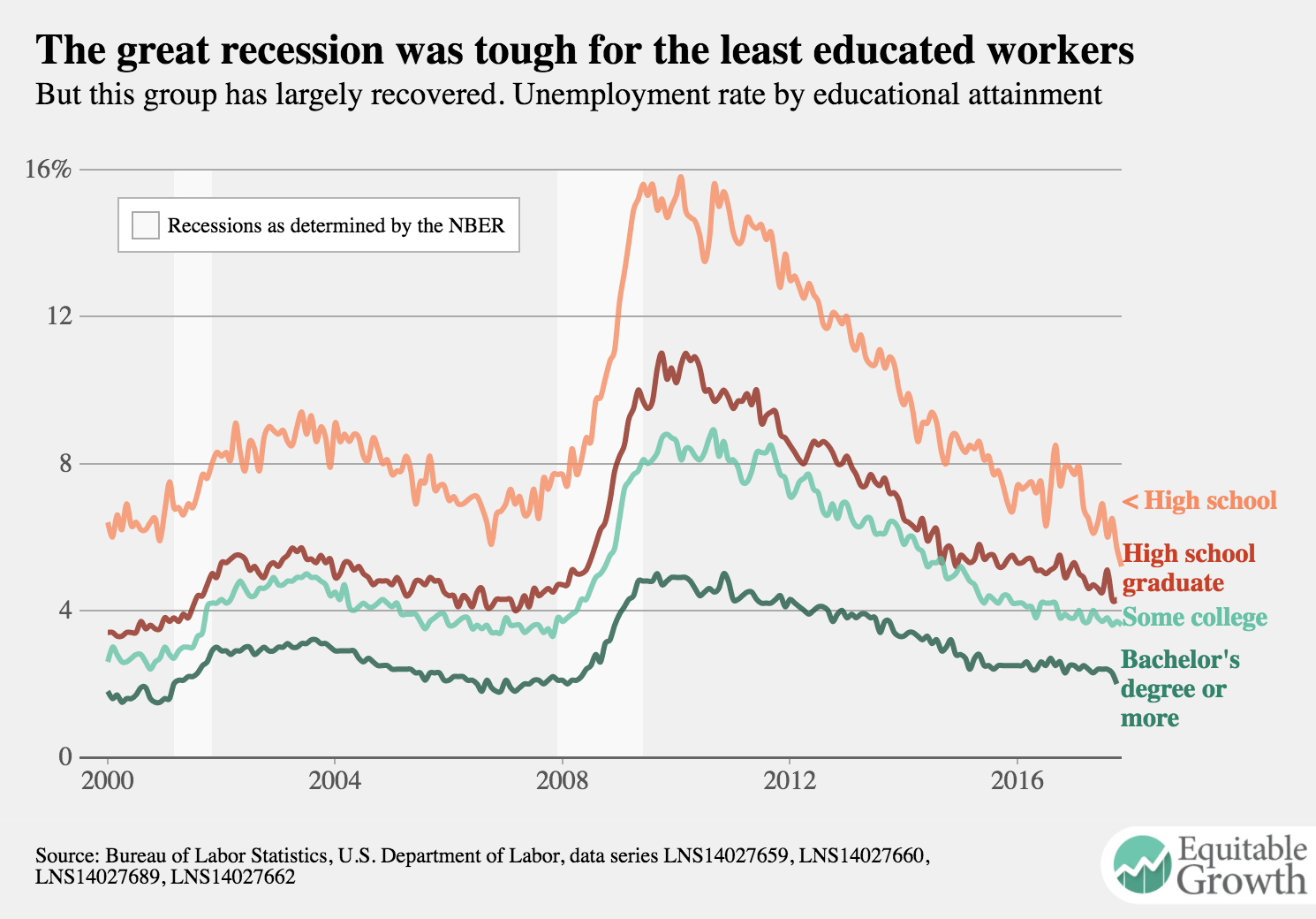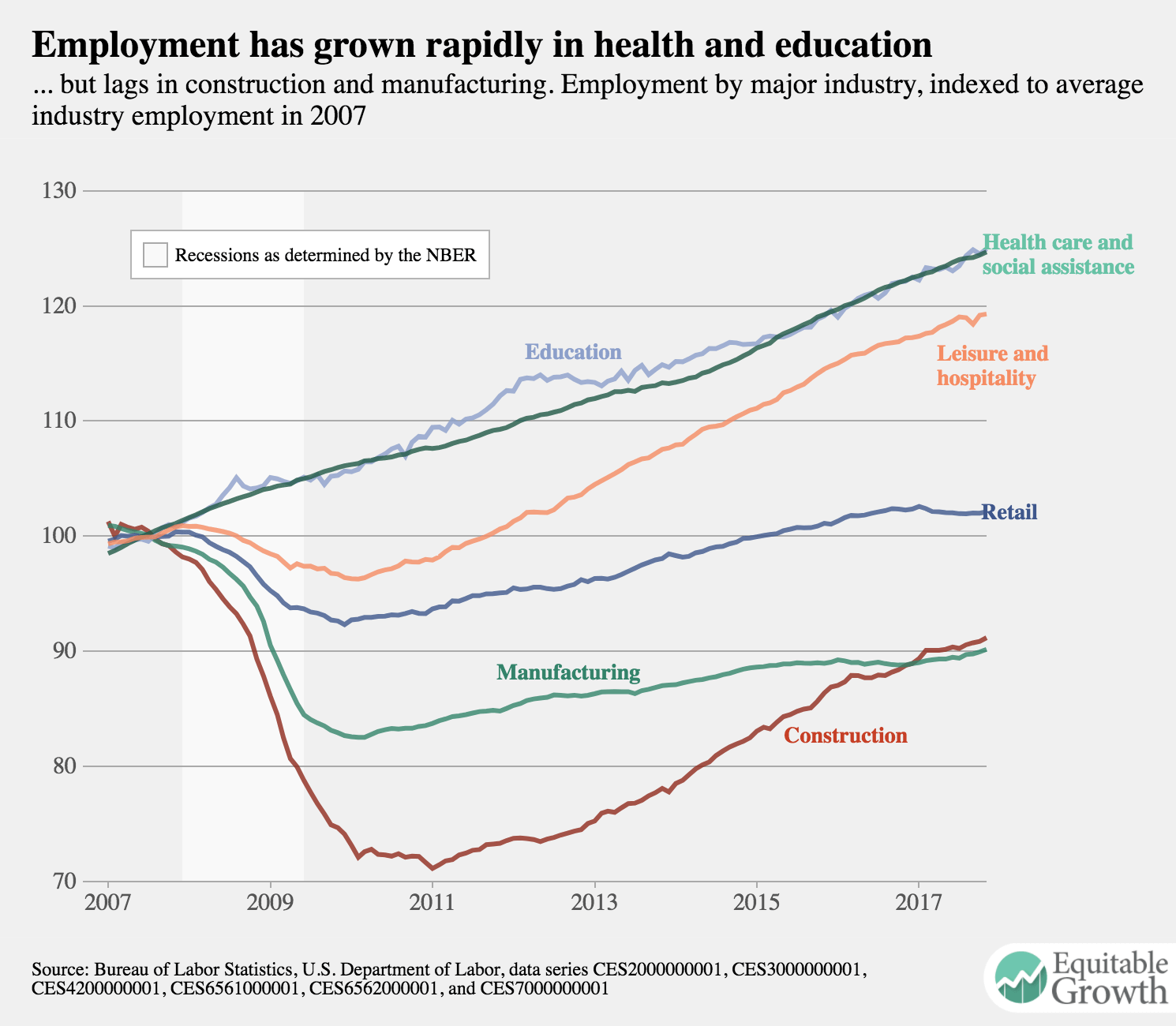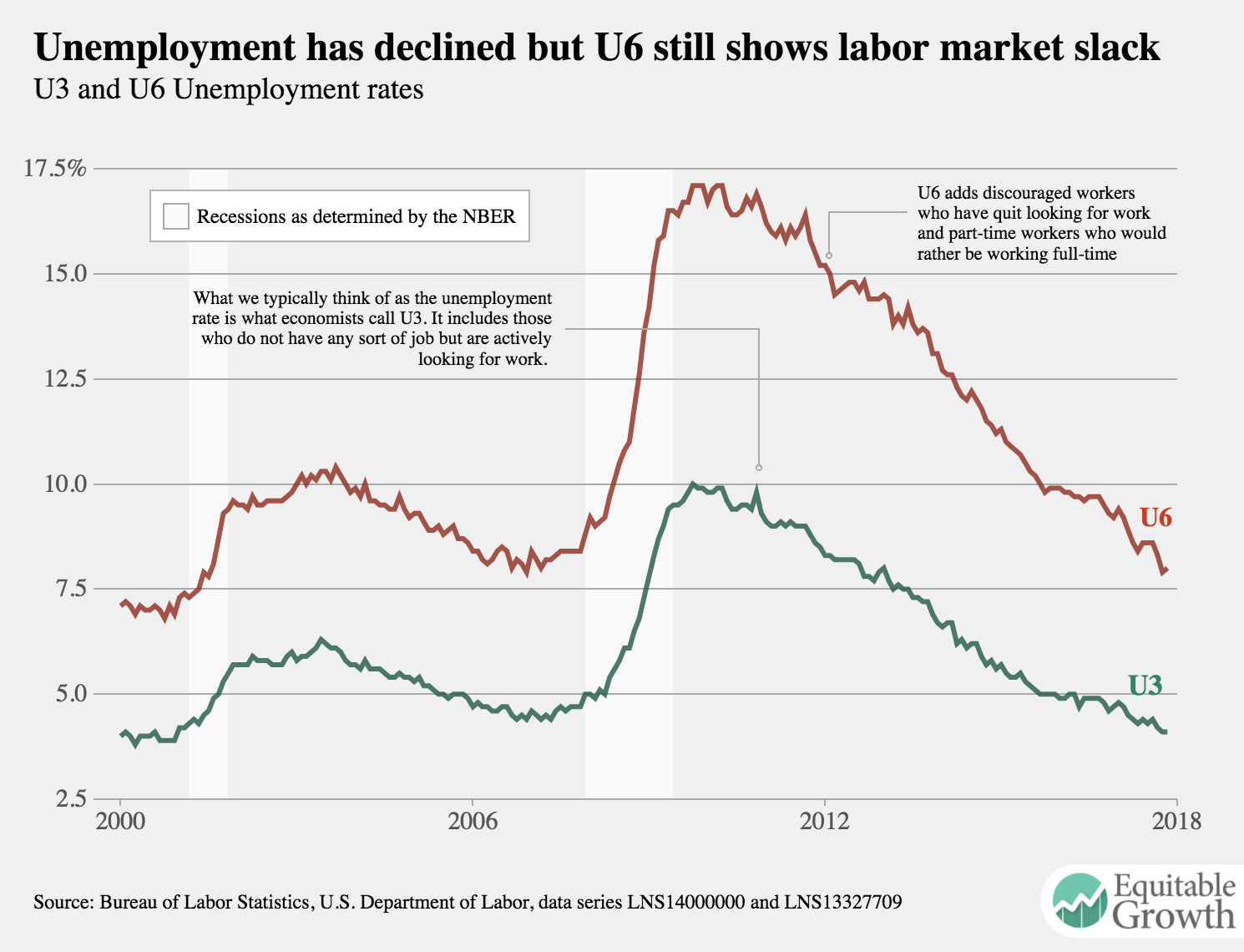This is a weekly post we publish on Fridays with links to articles that touch on economic inequality and growth. The first section is a round-up of what Equitable Growth published this week and the second is the work we’re highlighting from elsewhere. We won’t be the first to share these articles, but we hope by taking a look back at the whole week, we can put them in context.
Equitable Growth round-up
In a follow-up to the Tax Foundation’s response to Greg Leiserson’s analysis of its model for estimating the economic growth effects of tax cuts, Leiserson explains why the Tax Foundation’s model still isn’t internally consistent and why policymakers should regard its results with skepticism.
This week’s release in Equitable Growth’s Working Paper Series shows that as occupational tasks have evolved since the 1960s, particularly from routine to nonroutine tasks, most of these shifts have occurred within, rather than across, occupations. Nisha Chikhale explains more about the paper’s findings and how they fit in with other research into causes of income inequality.
The U.S. Bureau of Labor Statistics released the Employment Situation report for November this morning. Check out five key graphs from the new data compiled by Equitable Growth staff.
Links from around the web
The most prosperous places in the United States are no longer the fastest growing places, with implications for both economic mobility and growth. [nyt]
“The economy is continuing to create more of our core customer,” says the CEO of Dollar General. [wsj]
Equitable Growth Steering Committee member and Stanford economics professor Raj Chetty’s latest paper finds that low-income students who are among the very best math students are no more likely to become inventors than below-average math students from affluent families. [nyt]
Wonkblog’s Matt O’Brien digs in on some of the issues with the Tax Foundation’s model that Equitable Growth’s Greg Leiserson has previously flagged. [wapo]
“8 antitrust experts on what Trump’s war on CNN means for the AT&T–Time Warner merger” [vox]
Friday figure
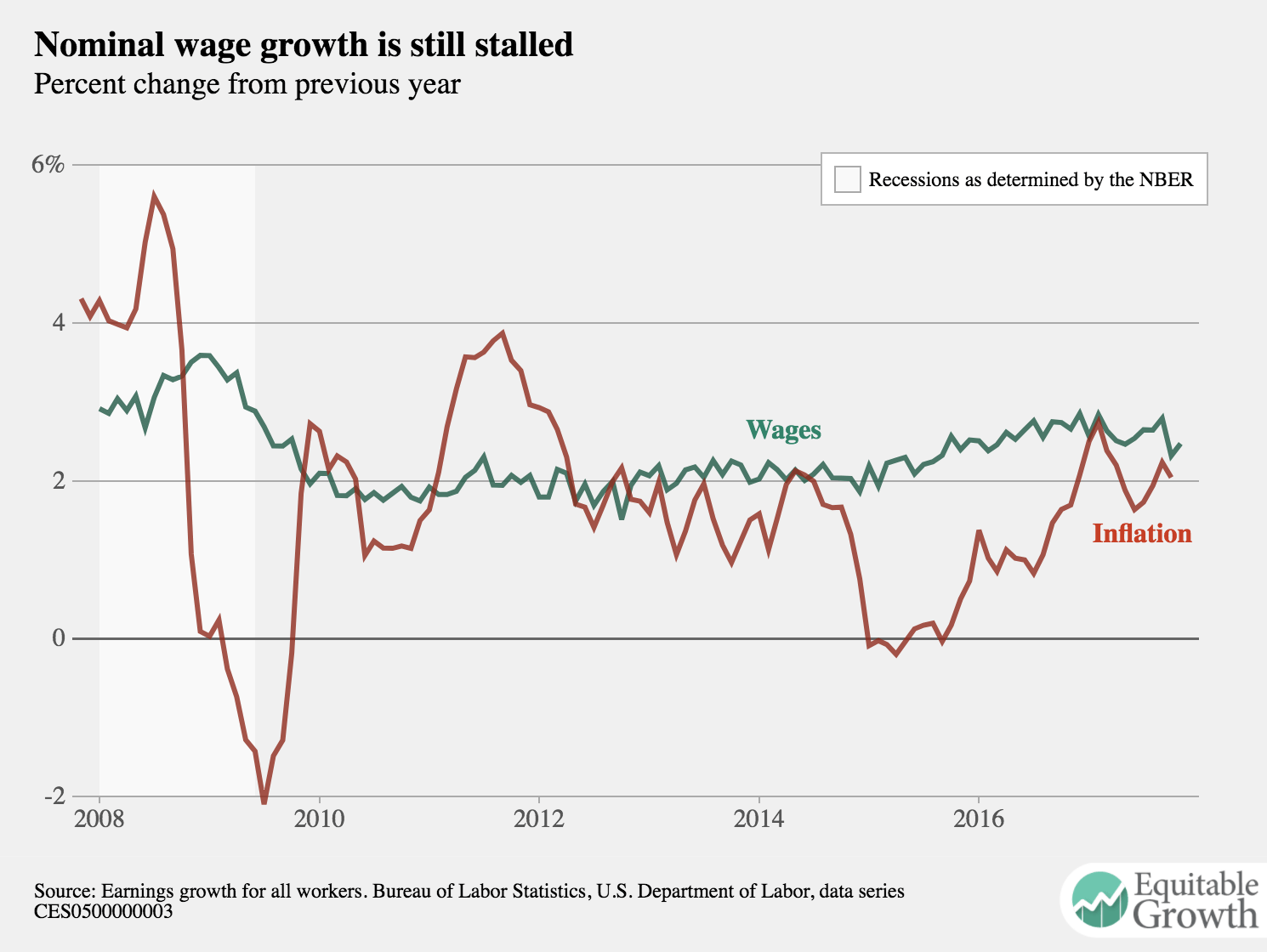
Figure from “Equitable Growth’s Jobs Day Graphs: November 2017 Report Edition”

